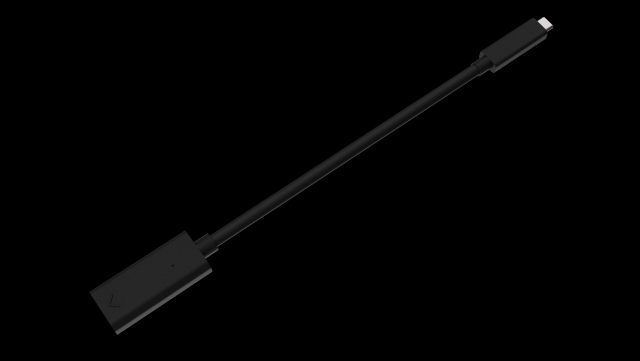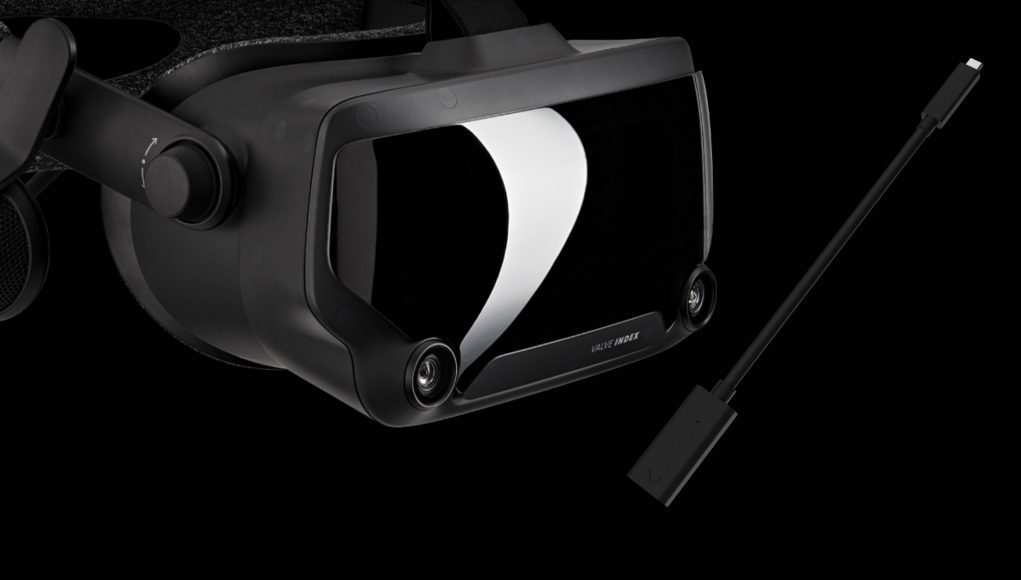Alongside the company’s new Index headset, Valve offered an optional VirtualLink adapter which would replace the three plugs on the end of the headset’s tether with a single VirtualLink port for use with compatible GPUs. This week the company canceled the adapter and offered refunds, citing technical issues and a lack of adoption of the VirtualLink port on laptops.
Revealed in 2018, VirtualLink is a connection protocol and port (based on USB-C) designed for VR headsets. The open standard is officially backed by NVIDIA, Valve, Oculus, AMD, Microsoft, and HTC.
Valve was the first company to offer a first-party VirtualLink adapter, as an optional accessory for $40. The adapter would replace the three ports on the end of the default Index cable (DisplayPort, USB, and power) with a single USB-C port to plug into VirtualLink compatible GPUs.

This week the company told customers who ordered the adapter that they decided to cancel the product and issued full refunds in addition to giving those customers $20 in Steam credit. In the cancellation note to customers, the company was also quite transparent about its reasons for cancelling the Index VirtualLink adapter:
The adapter cable was originally meant to provide added convenience for Valve Index users, making it so they could rely on a single USB-C connection to the headset rather than requiring separate physical connections for video, USB, and power.
However, for multiple technical reasons we no longer believe that the product would deliver that added convenience. Foremost on that list is reliability. Our current testing indicates the VR connection may fail to establish in a reliable manner. Additionally, Virtual Link technology has not been widely adopted by manufacturers, laptops in particular (where a single connection could be the most beneficial), translating to very few PCs having viable ports for the connection.
Valve wasn’t clear if the reliability issues were due to its own adapter design, or relating to the VirtualLink protocol. Whatever the case, it’s clear that the company felt it wasn’t worth fixing the issues to get the product out the door due to what it says is a lack of adoption of VirtualLink in laptops, where the ability to use a single port would be most beneficial.
Indeed, while all of NVIDIA’s RTX Founder’s Edition GPUs (and many third-party RTX cards) support VirtualLink, the situation with laptops is much different.
We wrote recently about this very problem: while all ‘GeForce RTX’ certified laptops technically support VirtualLink, not all (likely not even most) have the correct inner-piping to connect their USB-C ports to the GPU (a requirement for VirtualLink). That leads to a confusing situation where a laptop may have both the horsepower to run VR applications and a USB-C port, but not actually support VirtualLink. And it doesn’t help that, as far we know, no laptop makers have yet begun to clearly label the USB-C ports on their laptops to indicate VirtualLink compatibility.
Further, while NVIDIA has been aggressive with VirtualLink support on its desktop GPUs, AMD GPUs are much less likely to include a USB-C port to work with the feature, even though its latest generation of cards are technically capable (as long as a USB-C port is present).










